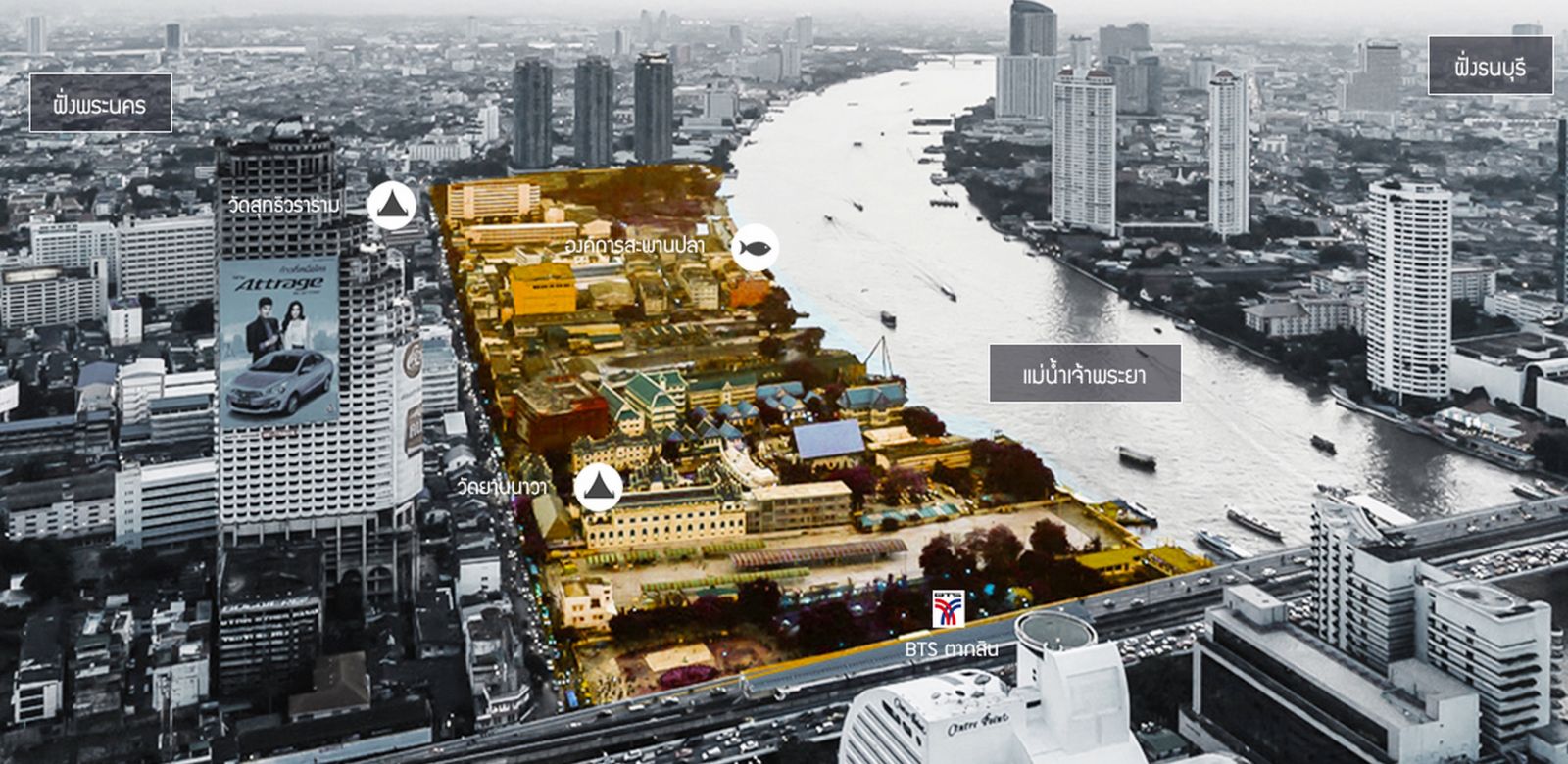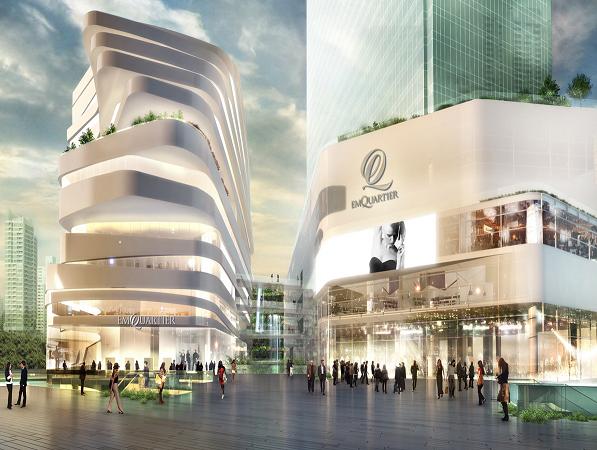The report by United Nations Development Programme (UNPD) indicated that 54% of the population in the world moved into the city and expect the increase of world population to 9.2 billion in 2050 (as of now, there are 7 billion people). While the tendency of world population growth is around 66% meaning there will be 6.3 billion people living in the city.
As for Thailand, the current urban population is 49% of all population and it is expected that the number in 2050 to be 73% due to the concentration of urban population and the complexity of the society, economy, politics and cultures. Therefore, the need of Bangkok city development for increasing life quality follows.
What is public space?
Jürgen Habermas, a German sociologist and philosopher, sees public space as the mutual area for all classes of people to express their thoughts. It is open to all groups of people to debate and exchange about societal problem leading to the solution.
From the era of feudalism, public space is merely a space for the privileged. In the 1700-1900s, public spaces turned to be a place for brainstorming and express political thoughts of the middle class who started to recognize themselves as citizens. Coffee shop and tavern are the meeting point to take down the feudalism. When the victory is won by the middle class, the public space was a useless tool. At present, the middle class shifted the purpose of public space from society and politics aspect to society and economy. We are seeing the public space made as parks, department store, cinema and recreational area.
Bangkok, the city of shopping center
When public spaces are used in the aspect of economy and those shopping centers are run by private companies. Because these places are the center for people, the fast lifestyle and traffic jam, people are needing a One Stop Service spot where they can fulfill all their needs; works or relaxing. It can be said that shopping center are taken as the main public space for Bangkokian.
Shopping center are a form of retail business within 7 categories; shopping center (Siam Paragon, Central World), department store (Robinson), superstore mall (Big C, Tesco Lotus, Makro), community mall (Villa Market, K Village), specialty store (Power Buy, Super Sport, Home Pro), entertainment complex (Major Cineplex) and other retail area.
A study by Colliers International Thailand reported that department stores make up 59% of retail business and 27% of them are in the heart of the city while 21% are not. Moreover, a number of department stores will be finished in 2015-2016.
“We should not just build a shopping center but a ‘district…” said by Supaluck Aumpuch, the vice executive director of The Mall Group and the executive director of The Emporium Group. She meant ‘The Em District’, the district evolved around three department stores, surrounding Benchasiri Park as if it is inside the store. It attempted to elevate Sukhumvit to be like SOHO in New York or Midtown in Tokyo.
She added “One more extravagance that needs to be talked about is that we take the natural park to the sixth floor so that everyone can breathe the fresh air in the heart of the city. It’s called Quatier Water Garden, a garden full of vast variety of plant and descending 40-meters-high waterfall”.
Meanwhile in the other side of Bangkok, Chaopraya riverside is being developed actively by a team of private companies, Siam Piwat (executive of Siam Paragon, Siam Center and Siam Discovery), Magnolia Quality Development Corporation and Charoen Pokphand Group. They are currently corporate to build 'Icon Siam' the biggest financial investment project in Thailand.
Chadatip Chutrakul, the executive board of Siam Piwat Co.,Ltd., was interviewed in the opening ceremony “Throughout 10 kilometers of Chaopraya riverside, we partner up other companies; over 40 hotels, Ta Tien market, Yod Piman, Asiatique, Condominium to support each other in business and transportation. We have no competition, and we are doing this for the country. We are joining force to make Chaopraya ‘Global Destination’ making all people around the world longing to come.
Shopping Center – Heart of the City
It cannot be denied that large-scale investment by big corporation in mega projects boost up the economy. It also makes the infrastructure like water supply, electricity and transportation system better. It is economical because of the concentration in one area. However, the development in Bangkok in the past shows that building department store making the busy area like Central department store brought traffic jam into that area.
Asst.Prof Dr.Panit Phujinda, department of urban and regional planning in faculty of Architecture of Chualongkorn University, explained “In aspect of urban planning, the simile of service order is like the medical service. The closest place to your house is public health station and if it is more serious you have the district hospital. Then it is the provincial hospital where they can treat every disease. You do not need to go to hospital if you only have a fever but right now there is no public health station”.
Even though, lately Department Store Companies are attempting to add more green area or push societal policy. However, they have not yet found the right balance. Big department store is a public space in economy aspect but it cannot successfully serve the demand in social aspect.
“If it’s on the right path, you will not be walking in the department store on weekdays because they are not close to your house. When you get out of work, you will use the small public park nearby and buy daily products in your local store. But now we always buy them in department store where you do not know anyone in there. After shopping, you get home at 10 pm and the sense of strong community is gone. The urge for community public space does not exist because no one wants to use it” Asst.Prof.Dr. Panit said.
Looking at possible ways
When areas in the city are limited and corporation are investing crazy amount of capital in mega project, how can the government work with them to develop the society at the same time with law and regulation as tools. Innovation for financial cooperation and investment development are also key.
Roppongi Omotesando Hill in the Tokyo, Japan uses the development model; POPS (Private Owned Public Space) where private spaces is turned into public space managed by the government. The government collaborates in planning to connect this place to the outside area and implement several regulations like prohibit the fencing, opening 24 hours a day, etc. What the company can do is heighten the building and use this to deduct the tax. Also, measure regarding tax can also be used as in Paris where the density of population is very high making the demand for land extremely high. These metropolitan cities do not allow people to own a detached house. The tax for detached house is extremely high so people are willing to build apartment to make the best use of the land.
When the world has a great tendency to move toward Urbanization, city horizontal expansion is not rewarding financially. There is an increased expense of each population due to more infrastructures. The higher is the density of population, the higher is the demand for land. Therefore, vertical city expansion is growing and the private space is smaller making the demand for public space higher.
As for Thailand, the government has not make urban planning very clear so the city expansion is quite horizontal. The density of high building is lower compared to other metropolitan cities. Even though, the law concerning city restoration is clear, e.g. Town Planning Act 1975 and TDR: Transfer Development Rights. Under TDR, right to land development can be transferred in order to conserve free spaces in the city, however, it can be fully practiced.
“Thailand Town Planning law reaches the international standard but the problem is that the authority cannot effectively utilize it. It has impacts on several group so they prefer to take no action” he added.
If legal mechanism cannot push forward public space in the city, does Bangkok have a chance to develop public space?

Image credti : www.yannawariverfront.org
‘Yannawa Riverside’ Development Model for Public Space
The areas in inner Bangkok from Thonburi Bridge to Krung Thep Bridge are owned by private companies. Alongside the river, there is only 3.5 kilometers out of 24 kilometers is open public space where people can use for activities.
Asst.Prof.Dr. Niramon Kulsrisombat, head of Urban Design and Development Center, was interviewed by a TV media that “We are working on the area 1.2 kilometers from Sathorn Bridge to Klong Kruay and the 85% of the land ownership is the government and religious places. There are big pieces of land connecting so there is quite a complication. It is also close to downtown and cut through the rail and boat transportation used by 30,000 people a day (including tourists).
The development process of Yannawa Riverside is about the partnership among government, private sectors and land owner without expropriation. The land development model is when interested people and strategies from government, privates and community collaborate from the planning, developing and manage (PPCP: Public Private Community Partnership). It is expected to be complete in 2017 and this is model for building public space alongside Chaopraya River.
(Watch the clip for more details of Yannawa Riverside Project https://www.youtube.com/watch?v=iSf293Rldfk and the information about this project is on the website http://www.yannawariverfront.org/ )
“Life quality is the issue that has been brought out to attention because the trend changes from having house with garden and car in the suburb to living in the heart of the city. The need for land is then high and it is time or else department store will become an only spiritual center for Bangkokians” Asst.Prof.Dr. Niramon said.
In the era where every inches of land is under ownership and has economic value, so the building public space in the traditional way are difficult in the modern urban development. However, the function of public space as a place to meet and experience lifestyle of all classes of people still lives on. Democracy method is used to build a public space for the collaborative space management and impartial society. If there is no public space, there will be no society and people will only encounter economic public space in the department stores.
If the capital city like Bangkok is a model for public space development in the wrong way, what about those regional big cities, do they have to face the same destiny?
Go to 'จับตา' for “พื้นที่สีเขียวในกรุงเทพมหานครฯ”
http://www.tcijthai.com/tcijthainews/view.php?ids=5493
Follow us on TCIJ Facebook Page for more update
www.facebook.com/tcijthai
www.facebook.com/tcijthai
Tags






